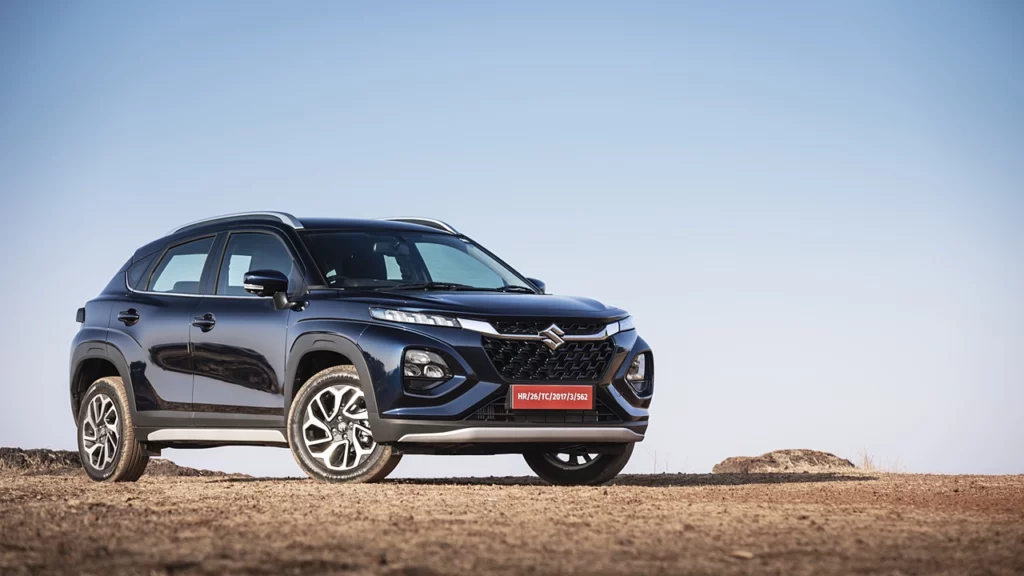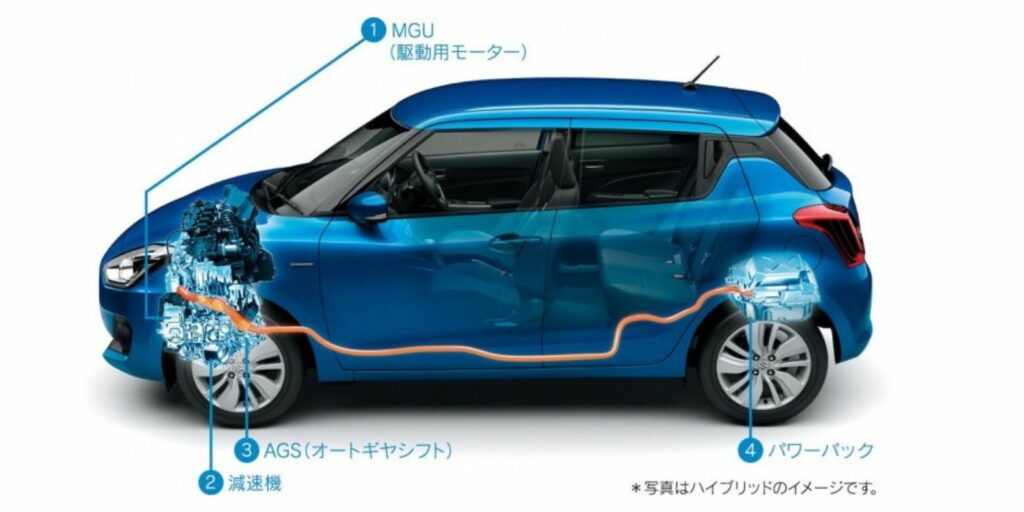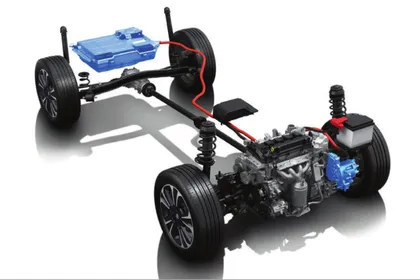Maruti Suzuki is planning to launch the Fronx Hybrid in 2025, which will feature its in-house “Series-Hybrid” technology and is claimed to provide a fuel efficiency of more than 35+ kmpl. In an era where the automobile industry is heading towards electrification, the reality is that buyers prefer Hybrids more than EVs and this demand is all thanks to Maruti Suzuki and Toyota. These two brands rather than rushing into the EV segment are focusing on multi-fuel projects and strategies that include CNG, biofuels and hybrids.

In fact, Maruti Suzuki is getting quite big in hybrids, with plans to explore this category more after the grand success of the Grand Vitara Hybrid, which uses Toyota’s famed hybrid platform and contributed about 15% to 20% of total Grand Vitara sales in 2023. The hybrid range will be further expanded by the 3-row version of the Grand Vitara in 2025.
The brand also plans to expand its Hybrid lineup by using hybrid variants of the Fronx, Baleno, swift and an upcoming small MPV. Interestingly, the company will be using an in-house series Hybrid powertrain which is currently in development rather than Toyota’s Hybrid system. This currently R&D series powertrain will be cheaper and basically a range extender.
Maruti Suzuki’s new series hybrid powertrain, codenamed HEV will be quite cheaper to produce than a series-parallel and parallel-only hybrid, which is why the brand decided to choose this route to balance the high cost of a powertrain that includes an IC engine, electric motor and battery and also the high 43% Goverment GST on Hybrids.
What is Series Hybrid and Why is this a masterstroke by Maruti?
In a series Hybrid powertrain, the petrol engine serves only as a generator or a range extender instead of directly powering the vehicle. What it does is provide electricity to the electric motor which drives the wheels. So, it is relatively simple because the electric motor is the only power source moving the vehicle, similar to an EV, except the electric motor draws its power from either the petrol engine or a small battery pack.

Also, the reason why it is called a range extender is because the IC engine acts as a generator and keeps recharging the EV’s battery pack hence also extending the overall driving range of the vehicle. The simplified design of the series hybrid powertrain due to the lack of a direct mechanical link between the IC engine and wheels makes it not only a cost-effective hybrid option but also reduces maintenance costs and improves overall reliability.
This also makes the vehicle well-optimised for city commuting where reliability plays an important role in moving through the traffic efficiently and safely. The series hybrid powertrain essentially ticks the box for a mass-market car and this is why Maruti Suzuki plans to introduce more cars with this powertrain.
Maruti Suzuki’s HEV series Hybrid will first be introduced with the Fronx Facelift followed by the New-Gen Baleno and the Next-Gen Swift, which will be launched this year. Other models in the line for the HEV system are the Spacua-based C-SUV and the next-gen Brezza.
Talking about fuel efficiency, Maruti Suzuki’s HEV-Powered cars are expected to give an excellent fuel economy of around 35-40 kmpl and will also play an important role in meeting the future CAFE targets which are going to get strict by 2027. So by the end of this decade, Maruti Suzuki will potentially have half a dozen models with a potential volume of 8 lakh units per month or to simply put it, 25% of its volume is made from Hybrid tech, including its own HEV 1.2-litre series hybrid and Toyota’s 1.5-litre parallel-hybrid powertrain.

Also, keep in mind that while the series Hybrid powered cars are exceptionally good to drive in the city they are not effective on the highways since the electric motor is the primary source of propulsion. So long-distancing is where parallel hybrids shine, where they can maintain higher speeds and huge loads, but they are also more expensive than the series hybrids, so it can be said that both the powertrains have their own work to do and perform.
Although Maruti Suzuki missed the opportunity to fully capitalize on the Diesel segment by pulling from it earlier than it should have and also missed the first mover’s advantage in the EV segment, they are currently moving way ahead with Hybrid technology in the industry, where our competitors have not even planned out anything yet for the Hybrid segment. So, it won’t be a surprise if Maruti Suzuki becomes one of the largest players in the Hybrid Segment in the upcoming years.

